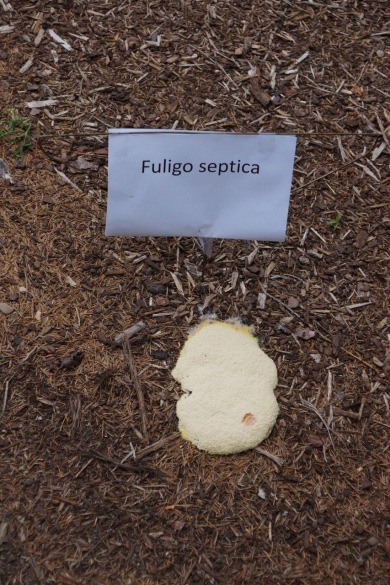We found Dog Vomit Slime Mold (yeah, it’s real) and hundreds of other species. We counted any living thing we could identify (and even some we couldn’t). And when the VCE-led BioBlitz at Marsh-Billings-Rockefeller National Historical Park in Woodstock was over, scores of people learned a little more about the nature close to home. “You don’t have to be some kind of a geek with a lab jacket on, looking through microscopes,” said VCE’s Kent McFarland, who organized the event. “We want to show people how much biodiversity happens right in your backyard.”
Part scientific endeavor, part festival, and part education, a BioBlitz is a 24-hour event in which teams of volunteer, including scientists, families, students, teachers, and other community members, work together to find and identify as many species of living organisms as possible.
These events have their origins in the National Park Service. The term “BioBlitz” was first coined by National Park Service naturalist Susan Rudy while assisting with the first event in 1996 in Washington, D.C. organized by Sam Droege (USGS) and Dan Roddy (USNPS). Since the success of that first BioBlitz, many have been held in other National Parks.
Nearly two decades later, hundreds of BioBlitz events are held annually around the world. The idea has remained the same, but the technology available has drastically improved. A BioBlitz has always required the participation of biologists with specialized equipment. But, with the addition of a smart-phone and internet powered BioBlitz, we are able to include the public more directly in the discovery of species by helping to capture hundreds of photographs of species with coordinates and then uploading and automatically tallying the results using an iNaturalist BioBlitz project page on the internet. iNaturalist was the brainchild of Ken-ichi Ueda and other students at UC Berkeley in 2008 and has since improved and grown dramatically. It is now supported by the California Academy of Sciences. Additionally, as species identifications are confirmed on the site, the data become “research grade” and are shared with the Global Biodiversity Information Facility (GBIF) and the Encyclopedia of Life (EOL), where researchers across the world can use the data.
The National Park Service with National Geographic has been conducting a major BioBlitz in a different National Park each year, leading up to the Nation Park Service centennial celebration in 2016. We hoped this BioBlitz would also be a way of celebrating not only biodiversity and the National Park Service, but also the 150th anniversary of George Perkins Marsh’s book, Man and Nature. Were he alive today, we’d like to believe he’d have joined and reveled in this celebration.
Results
In preparation for the BioBlitz, we uploaded the Park boundary as well as all species known from the Park to a “Places” page on iNaturalist. This page automatically tracks observations and species checklists from the park as they are added to iNaturalist at any time. This “place” was then connected to a BioBlitz project page on iNaturalist that we created for the event day.
To date, some data are still being added and species are still being identified from the BioBlitz day. As of 6 August 2014, we have gathered 847 observations from across the park representing 328 species. We have identified 587 observations to species. When an observation includes a photograph, date, location, and two or more observers have agreed on the identification, it is labeled as “research grade”. We have 339 research grade observations identified to species to date. Incredible but perhaps not unexpected, this effort added 96 species from the park that were not previously listed in iNaturalist or park research documents.
BioBlitz events can be an important source of data about local biodiversity. Data and insights gained through the efforts of citizen scientists can be as valuable as that obtained by scientists working in academia, natural history collections, and government agencies. Harnessing the efforts of the hundreds of people participating in citizen science will enhance the range and depth of data available as well as promote learning and caring for our natural heritage. As George Perkins Marsh wrote in Man and Nature, “Sight is a faculty; seeing, an art.” We believe that this BioBlitz helped bring recognition of the Park’s biodiversity through the art of seeing. It helped us to discover a rich fauna and flora that remains in the Park 150 years since Marsh penned his famous observations and thoughts.
____________________
The newsweekly Seven Days captured the science and spirit of the event in a recent article.

